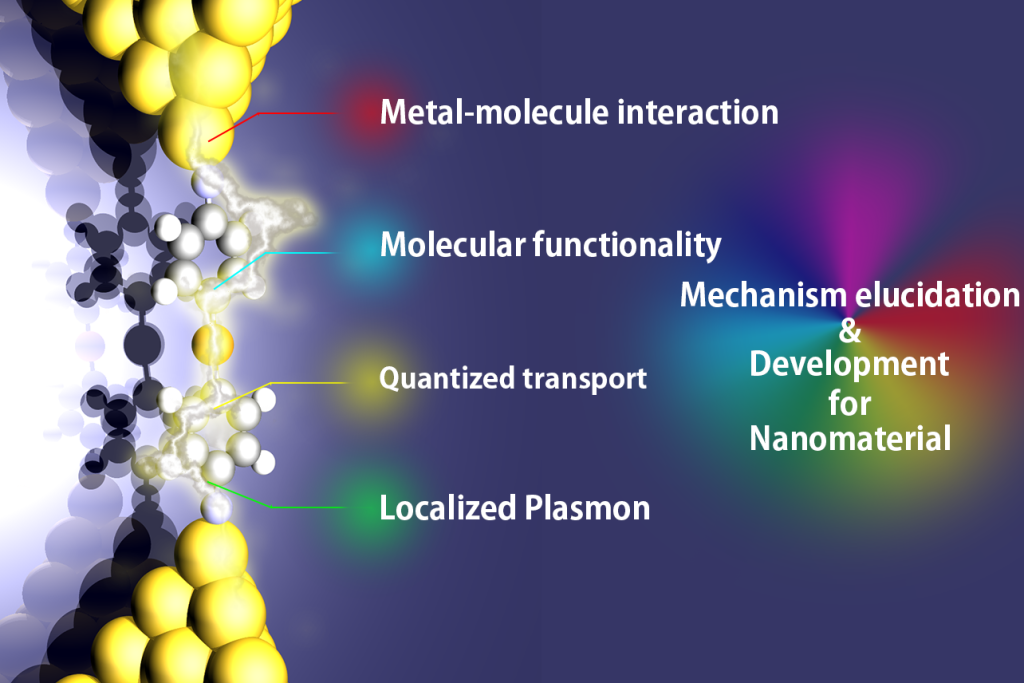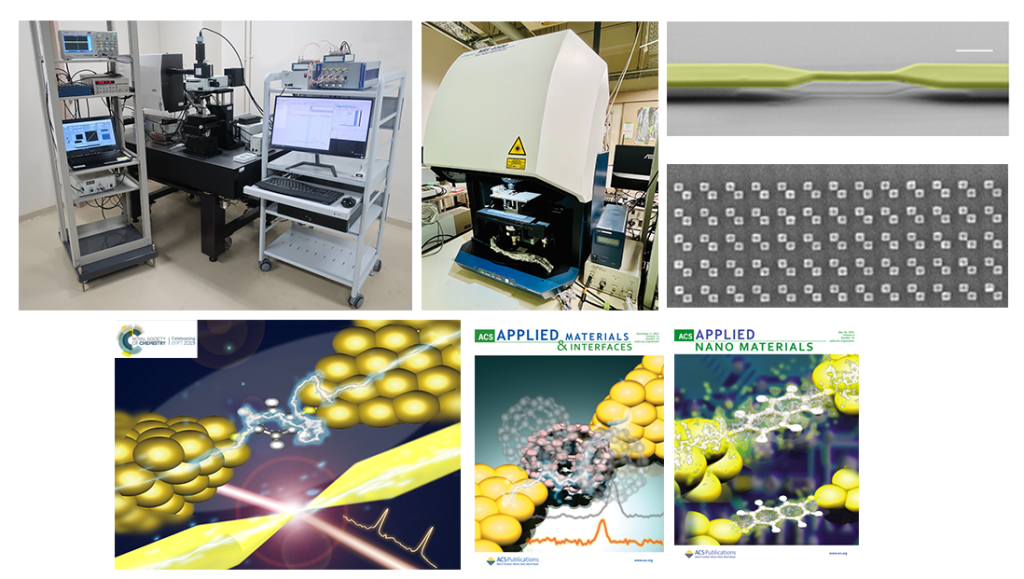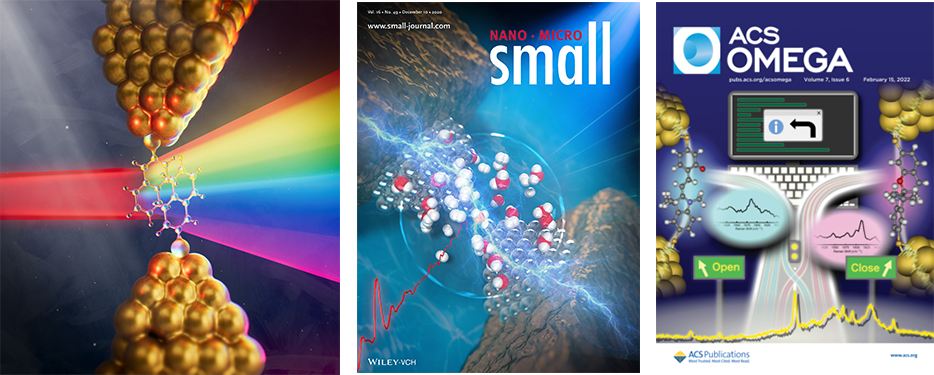Research
Research
Nanomaterials development focusing on “single-molecule junctions” through our unique measurement and analysis methods.
1. Single-molecule junction: ultimate metal-molecule-metal interface
A structure in which a single molecule is connected to an electrode is the ultimate metal-molecule-metal interface structure and is called a single-molecule junction. Electron transport at the electrode-molecule interface is crucial for the development of organic semiconductors and organic solar cells. Since the interface accounts for a large fraction of the volume of nanomaterials, elucidating the electron transport properties at the interface is a top research priority. Studying the electron transport properties of single-molecule junctions in detail will clarify the relationship between the interface structure and properties at the metal-organic molecular interface at the single-molecule level.
Single-molecule junctions have a special structure in which molecules are connected to two nanometer-sized electrodes. Novel physical properties will emerge in single-molecule junctions due to quantum mechanical properties and interactions between the metal and the molecule. This knowledge will be useful for the development of new nanomaterials through the study of single-molecule junctions.

2. Geometrical analysis of single-molecule junctions
In single-molecule junctions, the orientation and adsorption structure of molecules has a significant effect on metal-molecule interactions. Therefore, clarification of the junction structure is essential to elucidate the physical properties of single-molecule junctions. However, it is almost impossible to determine the connection structure of molecules connected in a nanogap of about 1 nm with existing equipment. We have developed a method to determine the adsorption structure of molecules in nanogaps by analyzing the signals obtained from the combined measurement of surface-enhanced Raman scattering and electron transport properties. We have also developed a method for obtaining vibrational spectra of molecules adsorbed on electrodes and revealing their electronic states by analyzing signals obtained from current measurements. This method could potentially be used to reveal the state of molecules at the nanoscale interface at the single-molecule level.

(References)
Breakthrough enables more reliable electrical circuits built with Individual molecules
ACS Appl. Nano Mater., 6, 8135-8140, (2023); ACS Appl. Mater. Interfaces 13, 51602–51607 (2021).; Appl. Phys. Lett., 117, 233104 (2020); Chem. Sci. 10, 6261-6269, (2019).; J. Am. Chem. Soc. 138, 1294-1300, (2016). etc.
3. Current interests
Development of highly sensitive molecular detection methods at the single molecule level
Our method has the potential to be applied to highly sensitive molecular detection methods that identify molecules at the single-molecule level, as it allows us to examine how a single molecule is connected to an electrode.
Exploring new chemical reactions
In single-molecule junctions, it is observed that molecules have unique electronic states. In addition, unique phenomena such as the antenna effect, in which the electric field is enhanced at the nanogap where the molecules are connected, are observed. Thus, molecules in a single-molecule junction have different reactivity from molecules in ordinary solutions. It is therefore anticipated that the use of single-molecule junctions will enable selectivity by strong electric fields and reduce the energy required for reactions.
Development of new elements utilizing molecular functionality
It is our hope that molecules with a variety of functions will be synthesized today. By combining the properties of functional molecules with those of single-molecule junctions, we believe that further functionality may emerge. We anticipate that the many degrees of freedom possessed by molecules will be utilized in AI devices and other applications, such as in-sensor elements for robots and edge computers.

(References)
Investigating Interactions at Molecular Junctions for Novel Electronic Devices
J. Am. Chem. Soc., 145, 15788-15795 (2023).; ACS Omega, 7, 5578–5583 (2022).; Small, 17, 2008109 (2021). etc.